
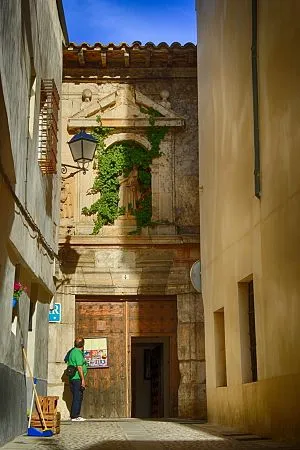
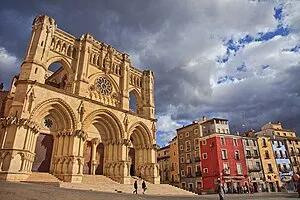

Timeless Cuenca: A Journey Through History, Art, and Architecture

Tour Guide
Jenny Multilingual
Welcome to Cuenca! On this GPS guided audio tour, we will visit 15 stops on a route of 2.59km. This tour focusses mainly on history.
Locatello is an app where you can generate personal audio guided tours. Set your preferred distance, guide, language and theme, and a guided tour is created on the spot.
Walking Time
Distance
stops
Language
Tour Stops

Church of San Nicolás, Cuenca
A 15th-century church built with mampostería and stone, featuring a simple façade with an arched doorway and a rectangular tower with two bodies, a single nave, and a barrel vaulted ceiling.

Posada de San José
A 17th-century palace, converted into a posada, retaining its original appearance and architecture. The building features multiple levels, staircases, and galleries, with a mix of medieval and Islamic architectural elements and ornate decorations.

Cuenca Cathedral
A cathedral featuring fantastical iconography with mythological and human figures, as well as sculptures of exotic animals unknown in the West, particularly in its Gothic arches from the late 15th century.

Palacio Episcopal de Cuenca
A stunning episcopal palace housing the Museum Diocesano, featuring a beautiful courtyard with Gothic arches and a classicist façade, adorned with intricate decorations and ornate doorways.
Audio Preview
30 sec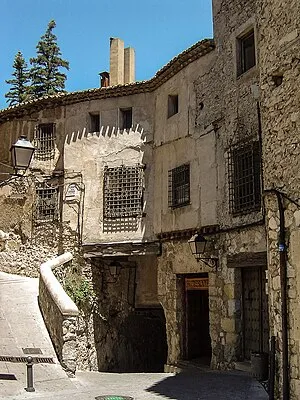
Museo de Arte Abstracto Español
A museum showcasing Spanish abstract art from the 1950s and 1960s, featuring a collection of 129 paintings, including works by Fernando Zobel and Gustavo Torner. Restored in 1966, the museum has expanded its collection and physical space over the years.
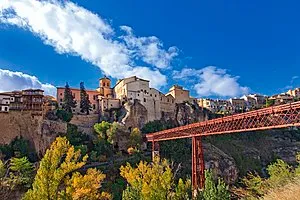
San Pablo Bridge
A steel arch bridge that crosses the Huécar River in Cuenca, connecting the convent of San Pablo and the city's urban core. It was built in 1903 and is a notable part of the city's heritage, offering a great viewpoint of the famous Hanging Houses.

Hanging Houses
The Hanging Houses are a complex of houses featuring wooden balconies, with uncertain origins dating back to the 15th century, refurbished several times, and currently used as individual homes and museum space.
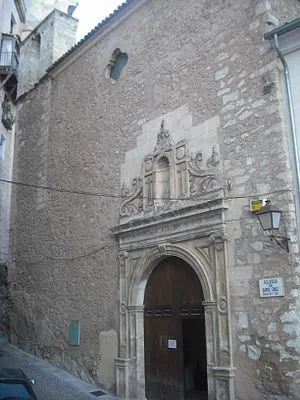
Church of Santa Cruz, Cuenca
A 16th-century church in Cuenca, Spain, featuring a single nave, mampostería construction, and a wood-covered ceiling. It has undergone several renovations, including the addition of a baroque-style portico and the introduction of decorative elements such as columns and pilasters.
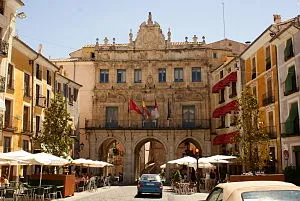
Cuenca town hall
A historic municipal building in Cuenca, Spain, Category: casa consistorial, featuring a rectangular plan with two distinct bodies and a façade articulated into three levels with pilastras of different orders.

Convent of La Merced in Cuenca
A 17th-century Baroque convent in Cuenca, Spain, built on the site of a former palace, featuring a single-nave church with a crypt, ornate façade, and geometric decorations.
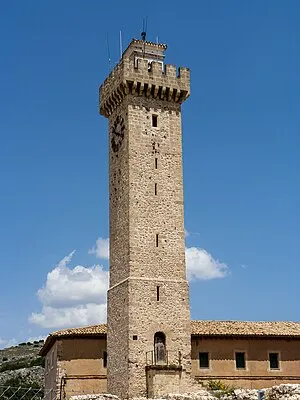
Torre de Mangana
A tower with a rich history, the Torre de Mangana has undergone various modifications over time, with its architecture changing significantly in 1926 and again in 1970, influencing its current neomudéjar style.
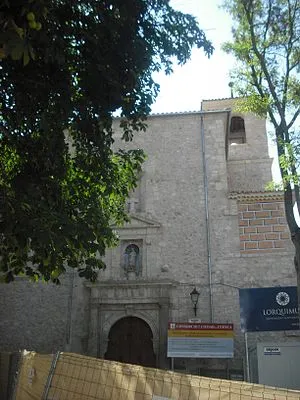
Church of San Andrés, Cuenca
A church building in Cuenca, Spain, which was constructed in the 16th century under the direction of architect Pedro de Alviz and master mason Sebastián de Arnani.
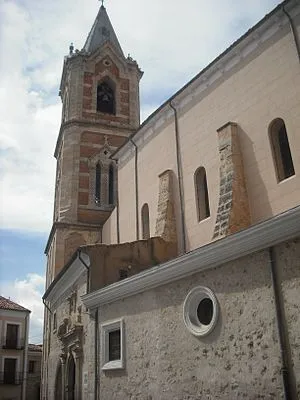
Church of El Salvador, Cuenca
A church building in Cuenca, this Gothic-style temple dates back to the 16th century, featuring a simple structure with a nave, capillas, and a square tower, modified over the centuries with new additions and renovations.
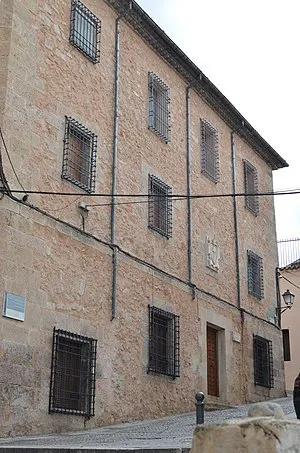
Monasterio de Madres Benedictinas, Cuenca
A Monasterio de Madres Benedictinas is a monument in Cuenca, comprising a polígono irregular building with a principal facade and three other facades, exhibiting a mix of Gothic and Plateresque styles.
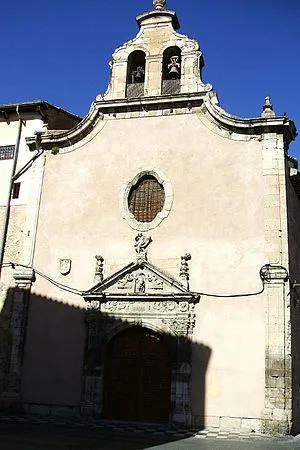
Convent of the Concepción Franciscana, Cuenca
A confluence of architectural styles, the Convent of the Concepción Franciscana in Cuenca features a Gothic-style patio, a 16th-century portada with plateresque details, and an 18th-century church with rococo elements and influences from Borromini.
Download App
Experience this tour and many more with our mobile app. Available for iOS and Android.
Audio Preview
Tour Map
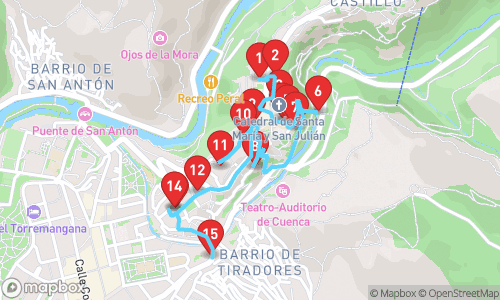
Quick Facts
- ✓GPS-guided navigation
- ✓Professional audio narration
- ✓Offline maps available
- ✓Premium content included
Why Choose This Tour
Expert Local Guide
Narrated by Jenny Multilingual, specializing in general tourism
Flexible Timing
Take the tour at your own pace, any time of day